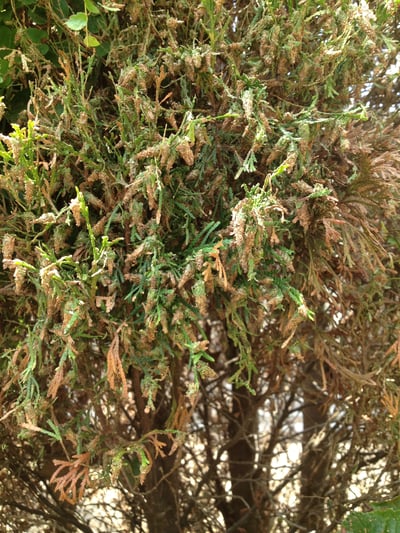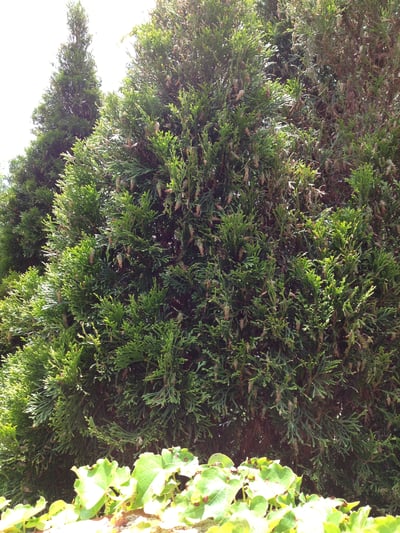An increase of dull brown leaves, decline of vibrant pine needles and a slight olive color could indicate bagworm infestation.
Thankfully, bagworms can be treated. But what do they look like? And how exactly are they treated?
What is a Bagworm?
Bagworms, or bagworm caterpillars, are 1-millimeter-long, reside in .5 to 3-inch-long brown cocoon-like bags and feed off of over 100 different types of plants, with a preference for evergreens, including arborvitae, cedar, juniper, pine and spruce, and even Japanese maple trees.
These caterpillars hatch during the first days of 90-degree weather and feed for around six weeks. When feeding, these worms emerge from their pine cone-like bags and strip evergreens of their needles and even consume whole leaves of some plants. Allowing these caterpillars to reside within your landscaping for several years can lead to plant death.

How are Bagworms Treated?
Carefully examine your plants for the presence of both bagworms and bagworm casings attached to the needles or leaves. If these caterpillars are in fact present, they will need to be treated.
A few bagworms that have been detected during the late fall, winter and early spring months can be solved by simply cutting or handpicking the bags off of the hosted plant. Remember to dispose of the bag as well.
If numerous caterpillars are detected on your plants, then an insecticide application may be required.
To ensure effective bagworm treatment purchase an insecticide that is labeled for bagworm management and apply from early to mid-June while the pest is active. Avoid further damage to your landscape by only applying the insecticide to host plants and plants that are specified on the label.

Ridding your landscape of these pests can be a little difficult as they can only be treated at certain times of their life cycle. Give Michael Hatcher & Associates, Inc. a call at 901-755-3207 to treat your bagworms within the coming weeks and continue enjoying your outdoor space and the healthy plants that dwell within it.

